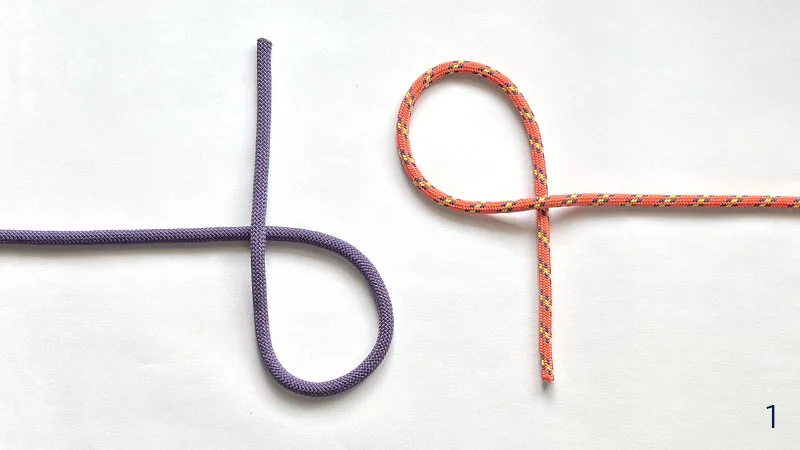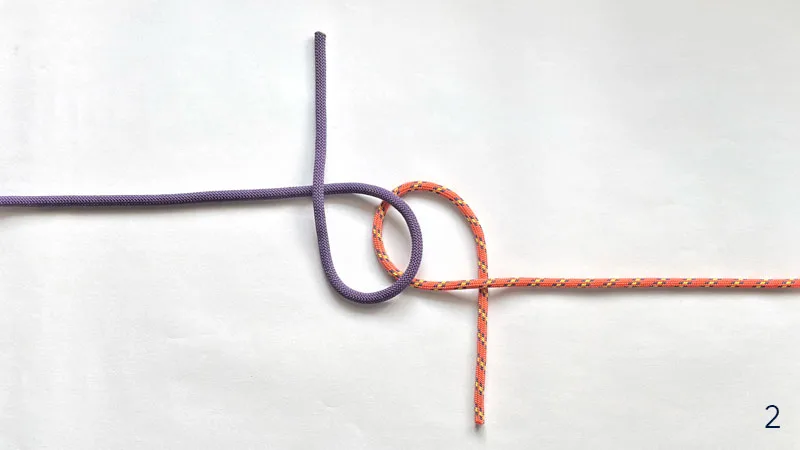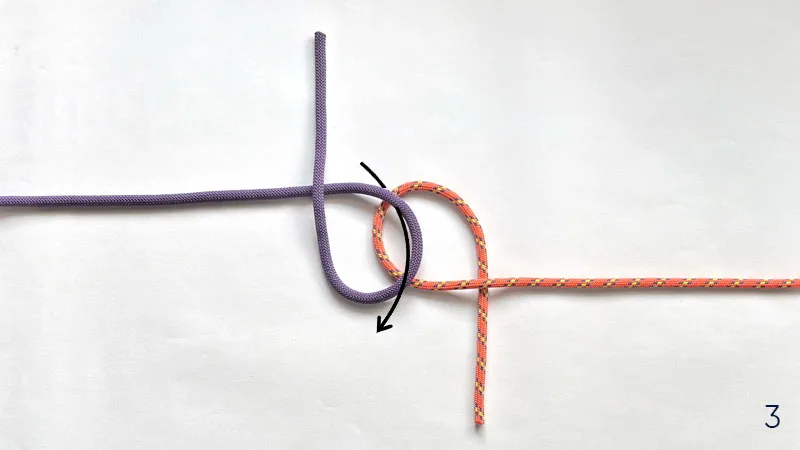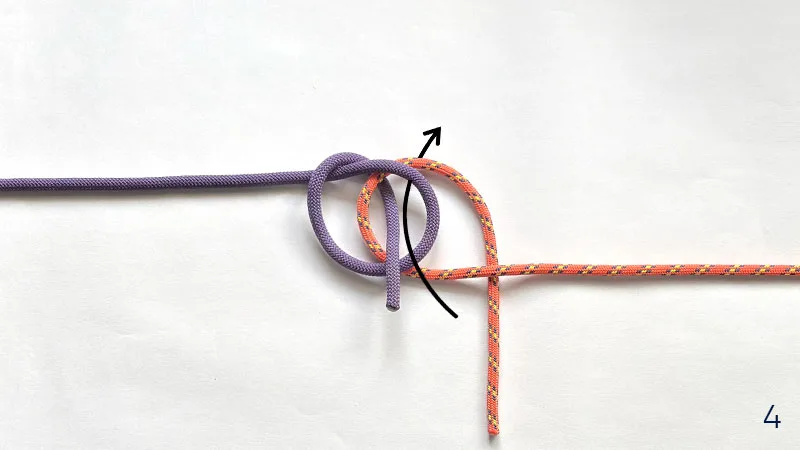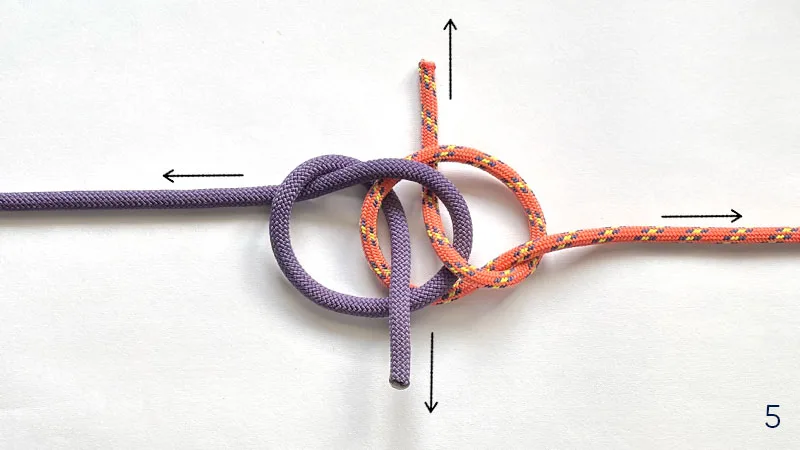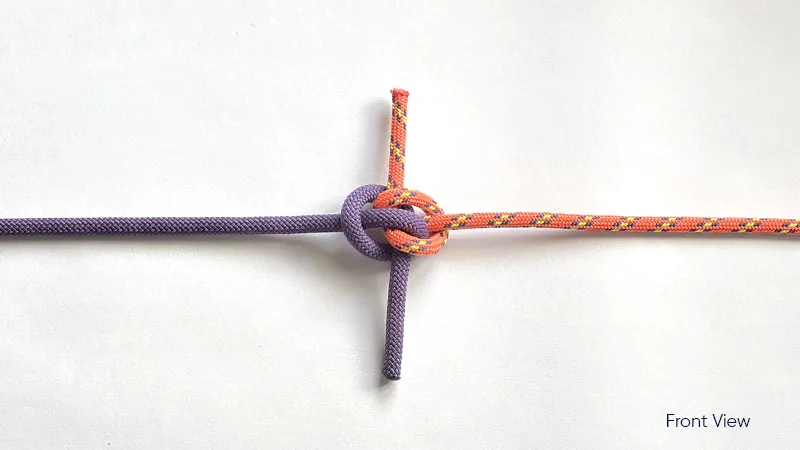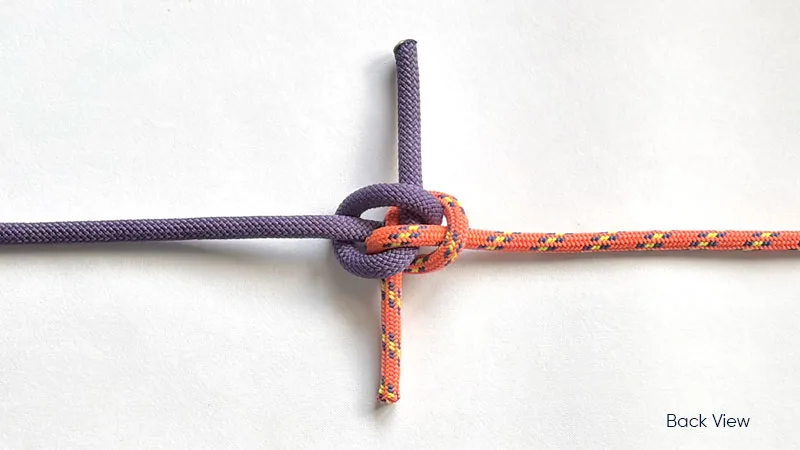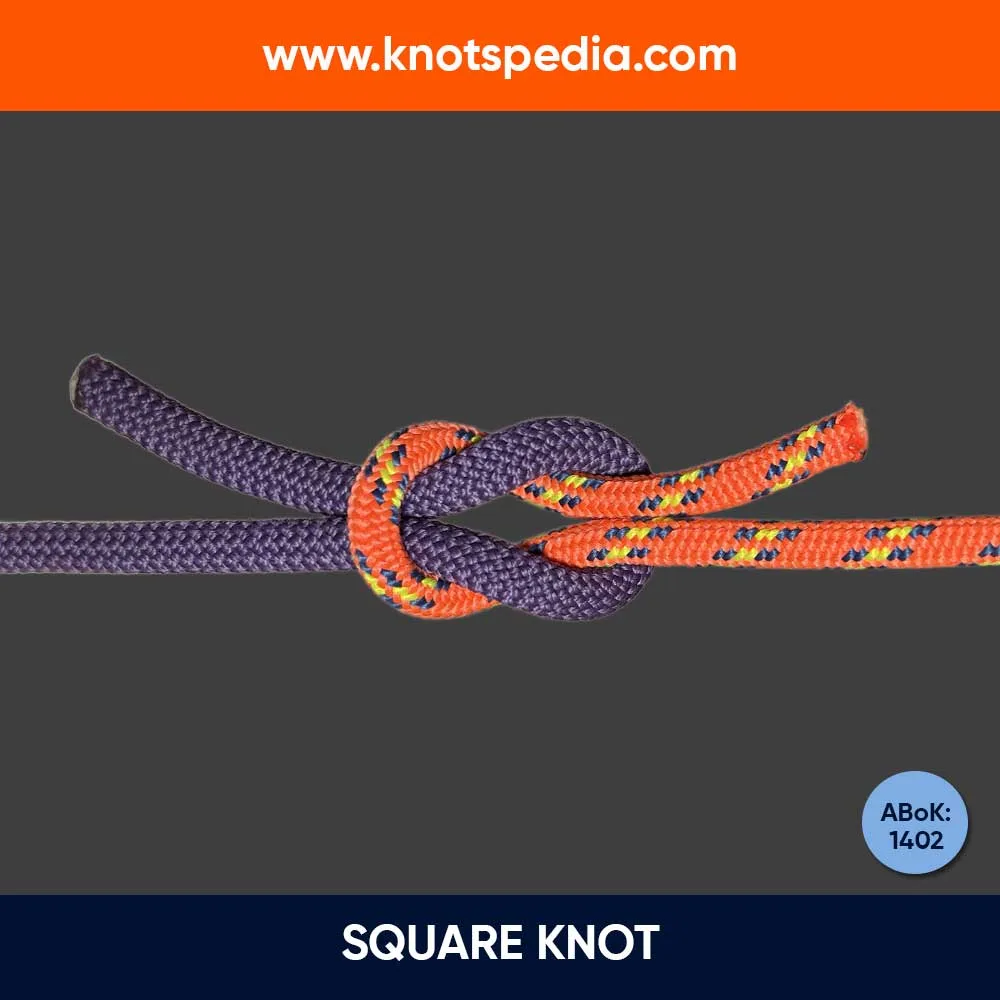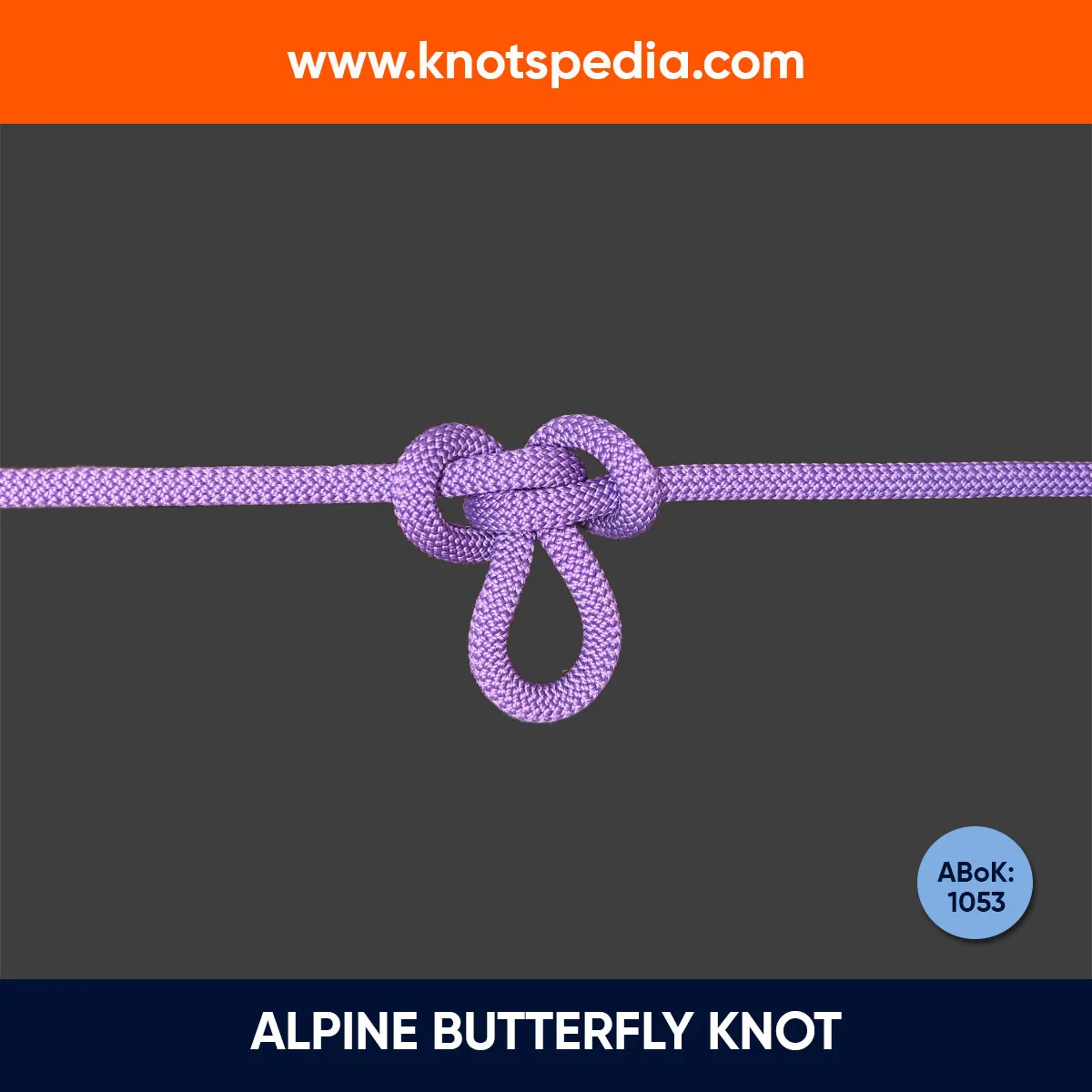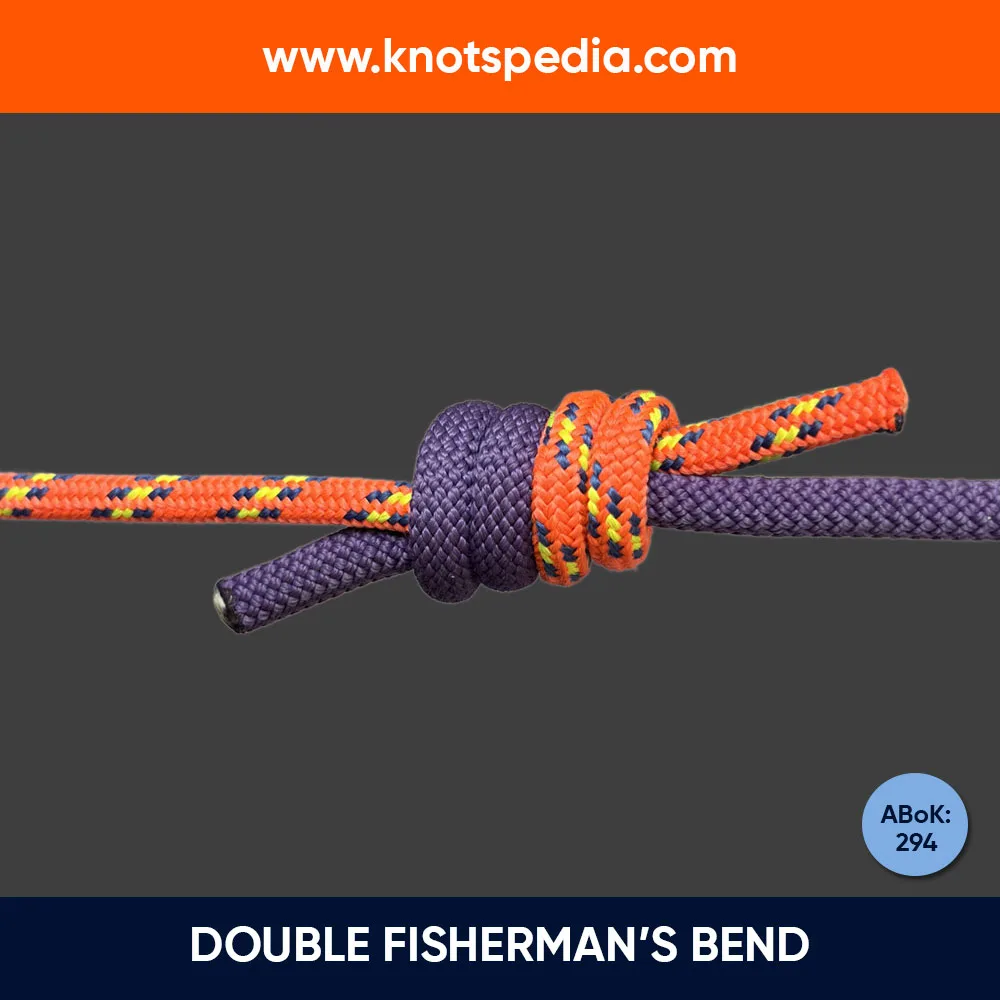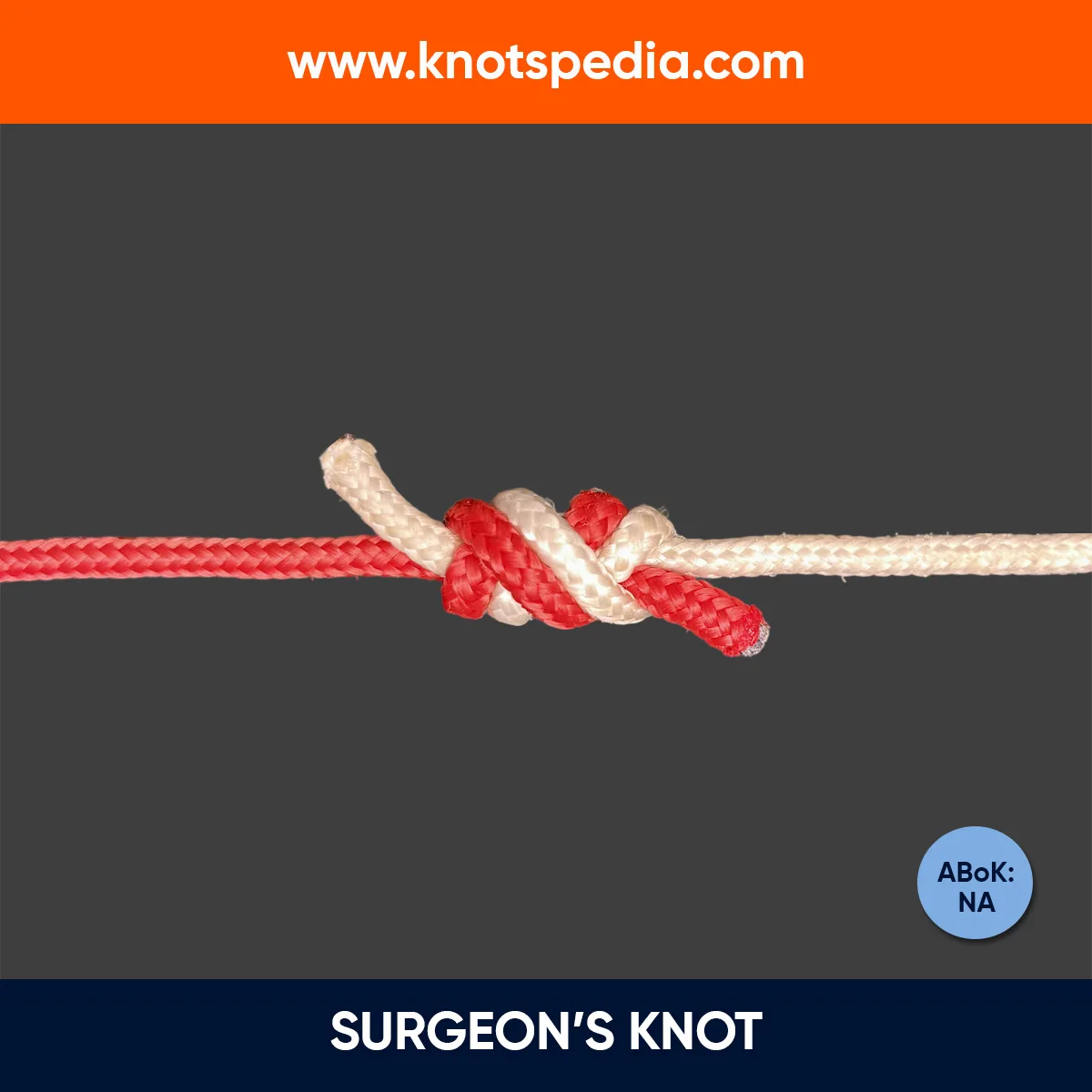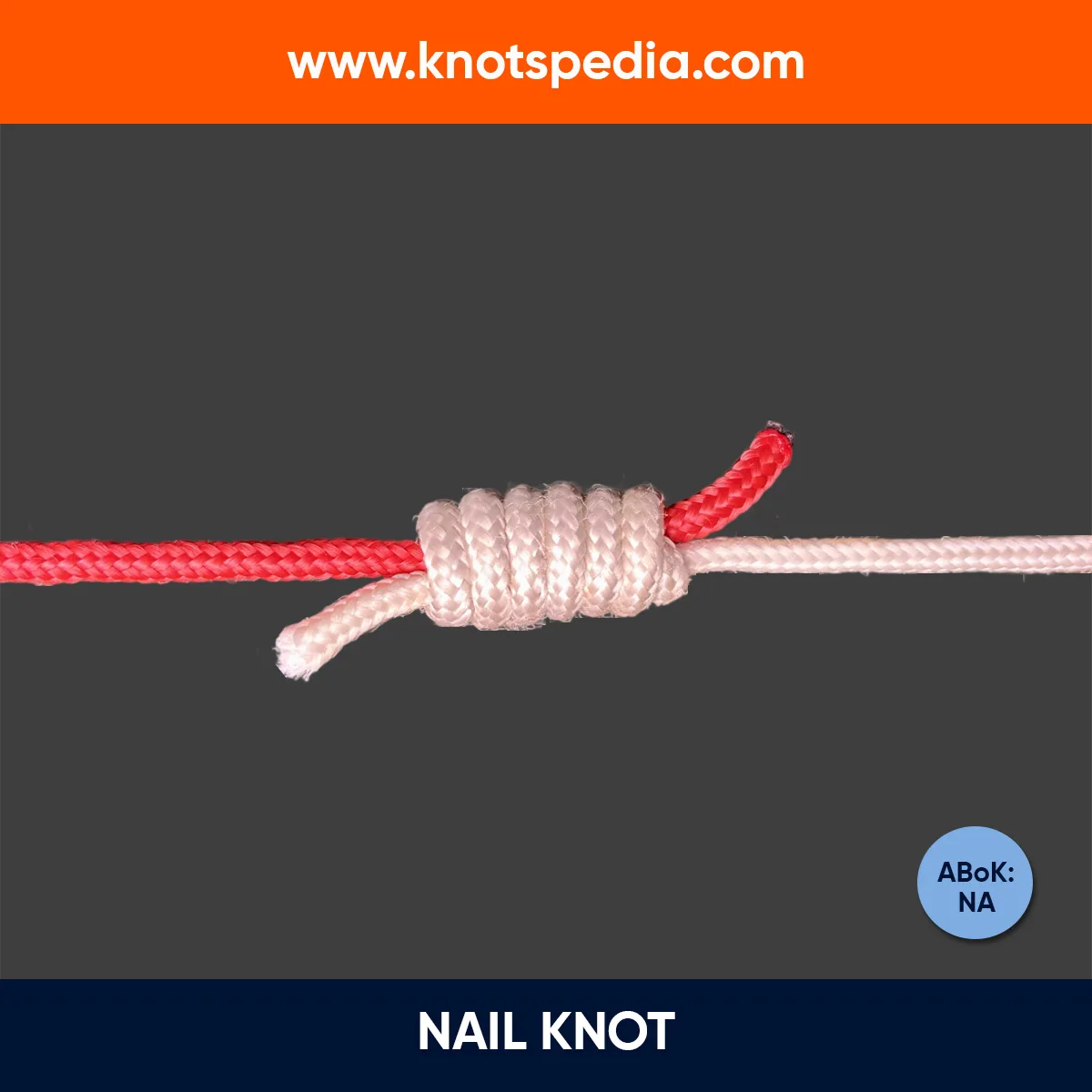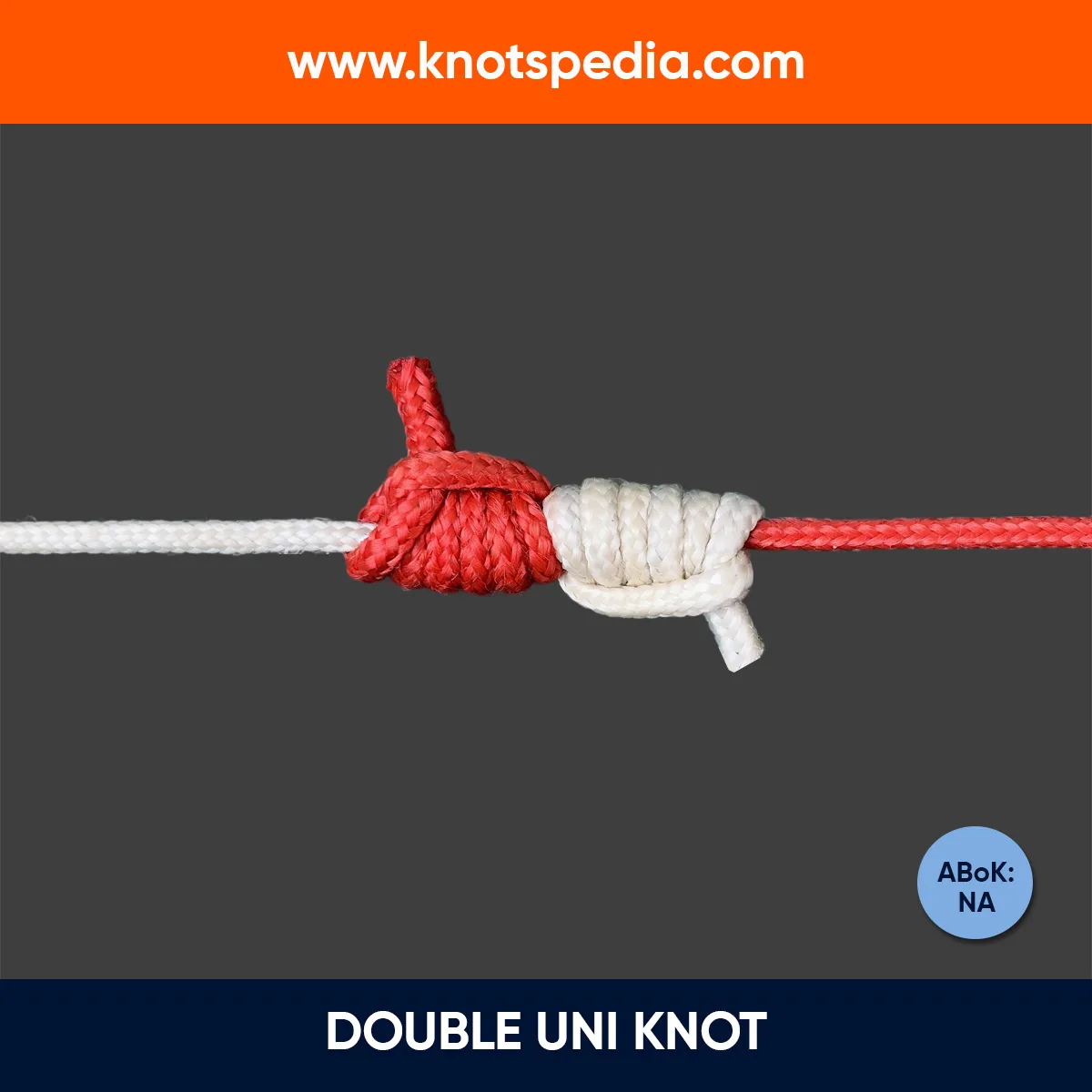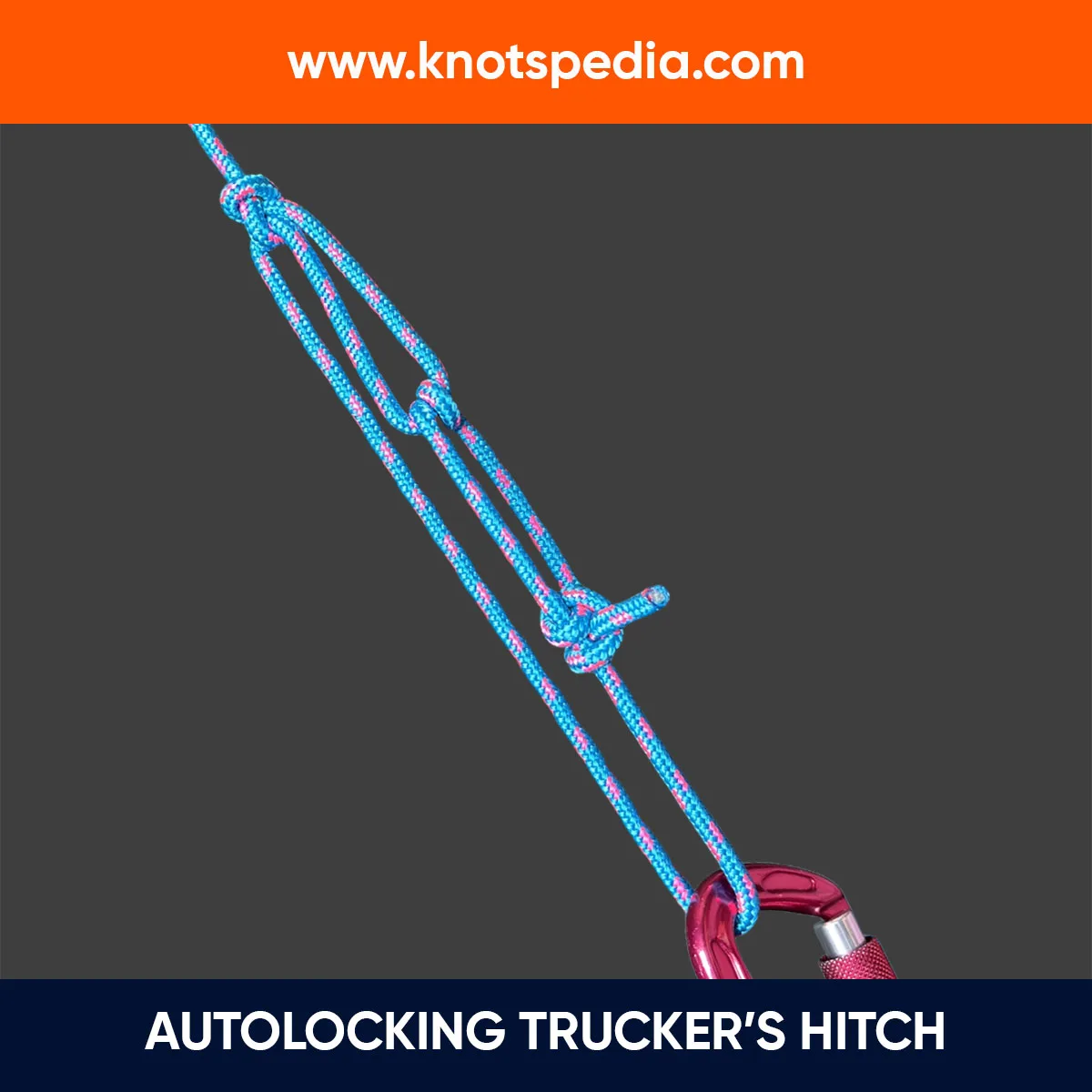The Zeppelin Bend is a practical bend knot used to join the ends of two ropes together.
It falls in the category of knots formed by two interlocking Overhand knots, like Hunter’s bend, Ashley bend, and Alpine Butterfly bend.
It’s safe, does not bind or slip, and can be untied even after heavy loading.
Despite its appeal, this knot is not well known.
Let’s explore this bend in detail.
Zeppelin Bend Details
Type: Bend
Other Names: Rosendahl’s Bend
ABoK Reference: NA
How to Tie Zeppelin Bend Knot
- Make a 6 shape with the blue rope and 9 with the red rope.
- Place the blue loop over the red one
- Pass the blue rope through the loops
- Now, pass the red rope through the loops
- Tighten the knot
To untie, just pull away the interlocking loops and pull out the tag ends from the knot.
Zeppelin Bend (Video Guide)
Zeppelin Bend Knot Step by Step
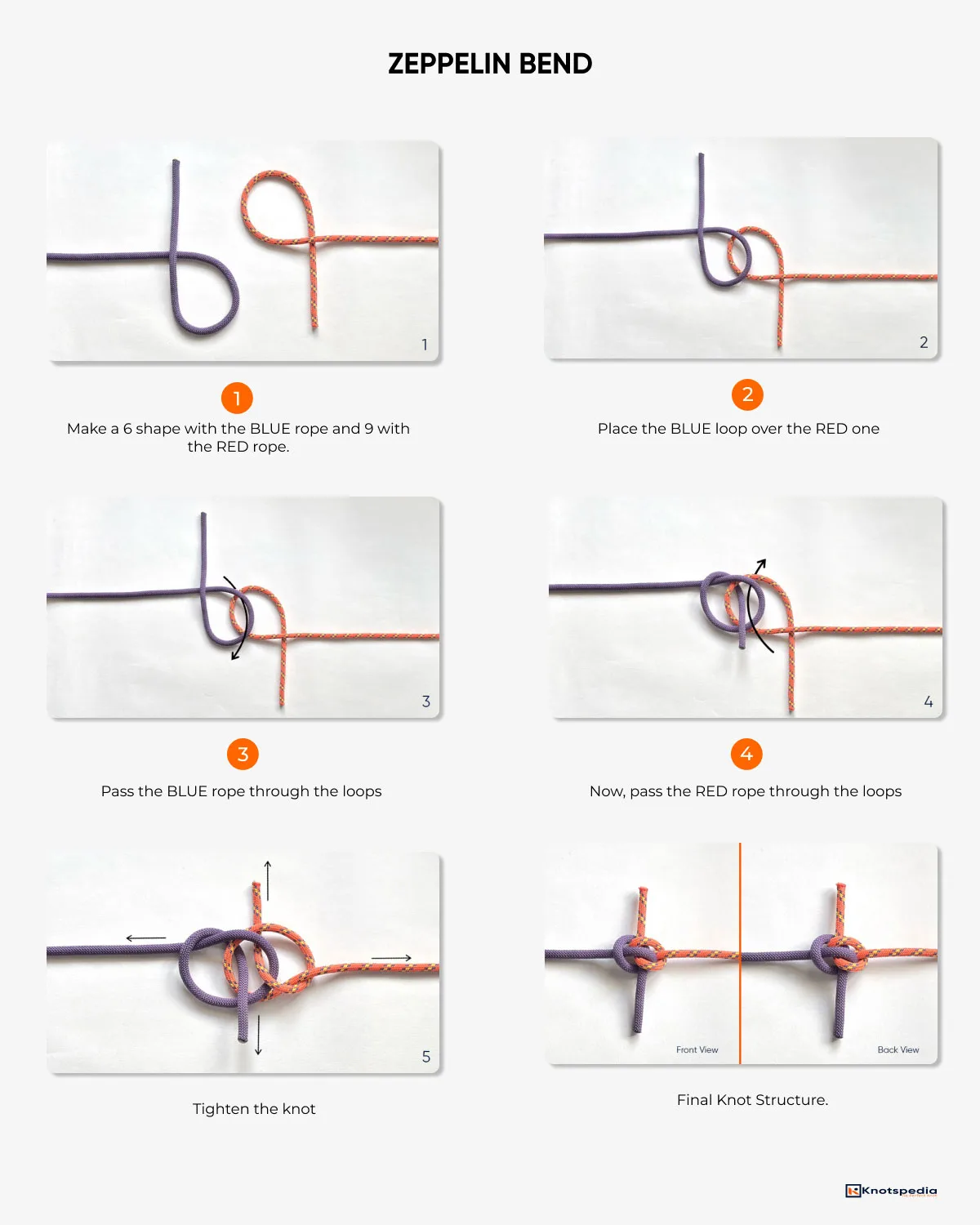
Pros & Cons
- Easy to inspect if it has been tied wrong because of its symmetrical shape.
- Easy to untie even after heavy loading
- Holds strong under sudden jerks, slack shaking, and cyclic loading.
- Performs well with slick materials like Dyneema
- Difficult to tie when there’s tension on the line.
- Needs careful attention while tying due to its similarity to bends like the Hunter’s bend
Application and Uses
The Zeppelin Bend is an excellent choice for joining two lines that will be placed under a heavy load.
It is used in rock climbing as it can bear a heavy load and is easy to untie after heavy loading.
Double Zeppelin Bend
If you tie the working end of each rope around and through the middle loops for a second knot, it is known as the Double Zeppelin bend.
It’s not conclusive that this variation is stronger.
Most will agree that the second pass doesn’t provide much of an advantage, but still it’s worth a try.
Other Similar Bends
Zeppelin Bend is similar to other bends like Ashley’s Bend, Hunter’s Bend, and Alpine Butterfly Bend.
All these bends are tied with the interlocking Overhand knots.
Hunter’s Bend

Hunter’s bend is one of the knots that looks similar to the Zeppelin bend.
If we dip deeper, the Zeppelin bend is formed from two superposed loops of opposite chirality, whereas the Hunter’s bend is formed from two interlinked loops of the same chirality.
The advantage over the Hunter’s bend is that it’s easy to untie after loading.
Ashley Bend
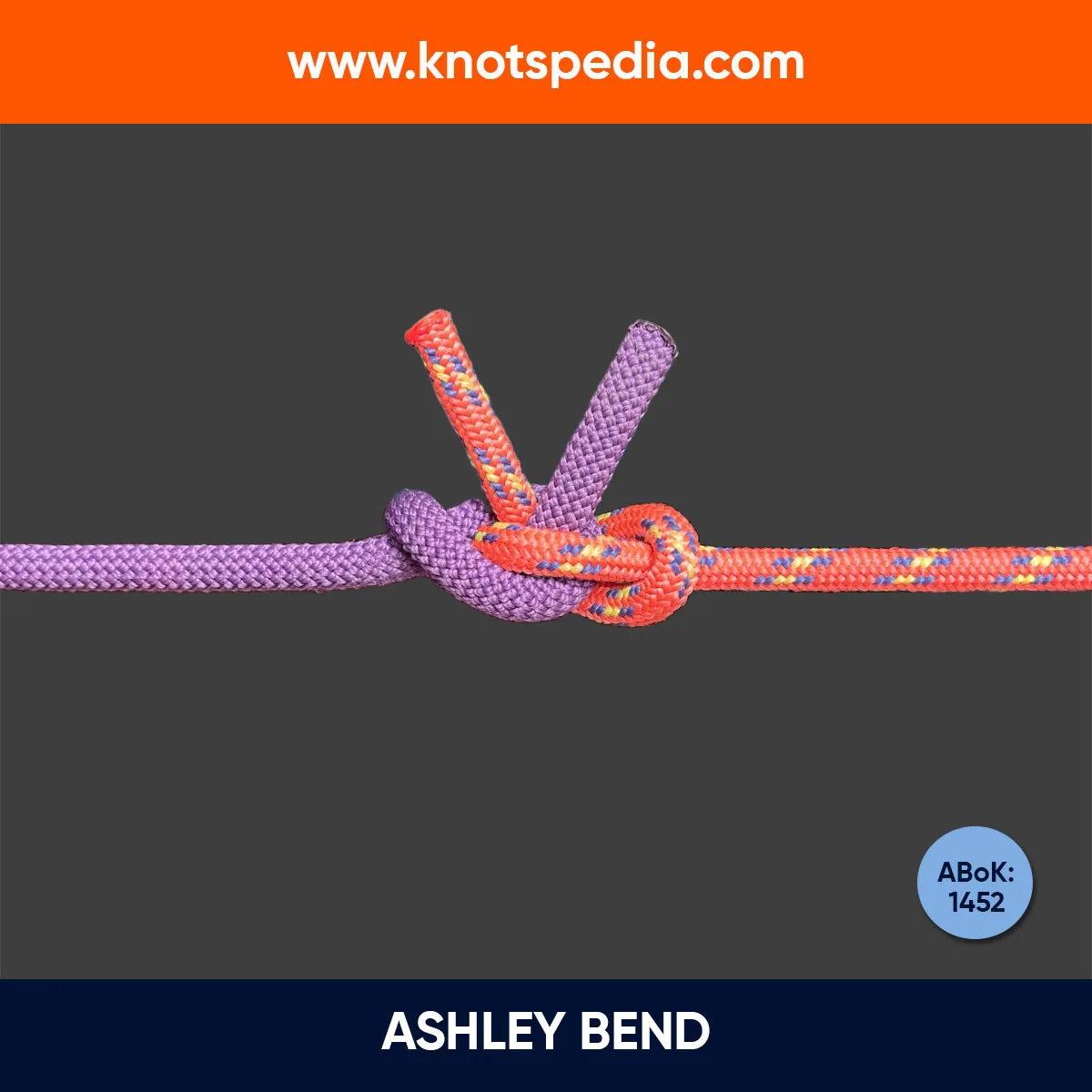
Ashley bend (ABoK #1452) is used to join two ropes of similar thickness.
It has all of the advantages of the Zeppelin bend, but offers no unique advantage to justify its use.
That said, it can be challenging to untie once under heavy load.
There’s a version, rather an incorrect version, of the knot called the Evil Imposter that results from threading the ends incorrectly.
Alpine Butterfly Bend
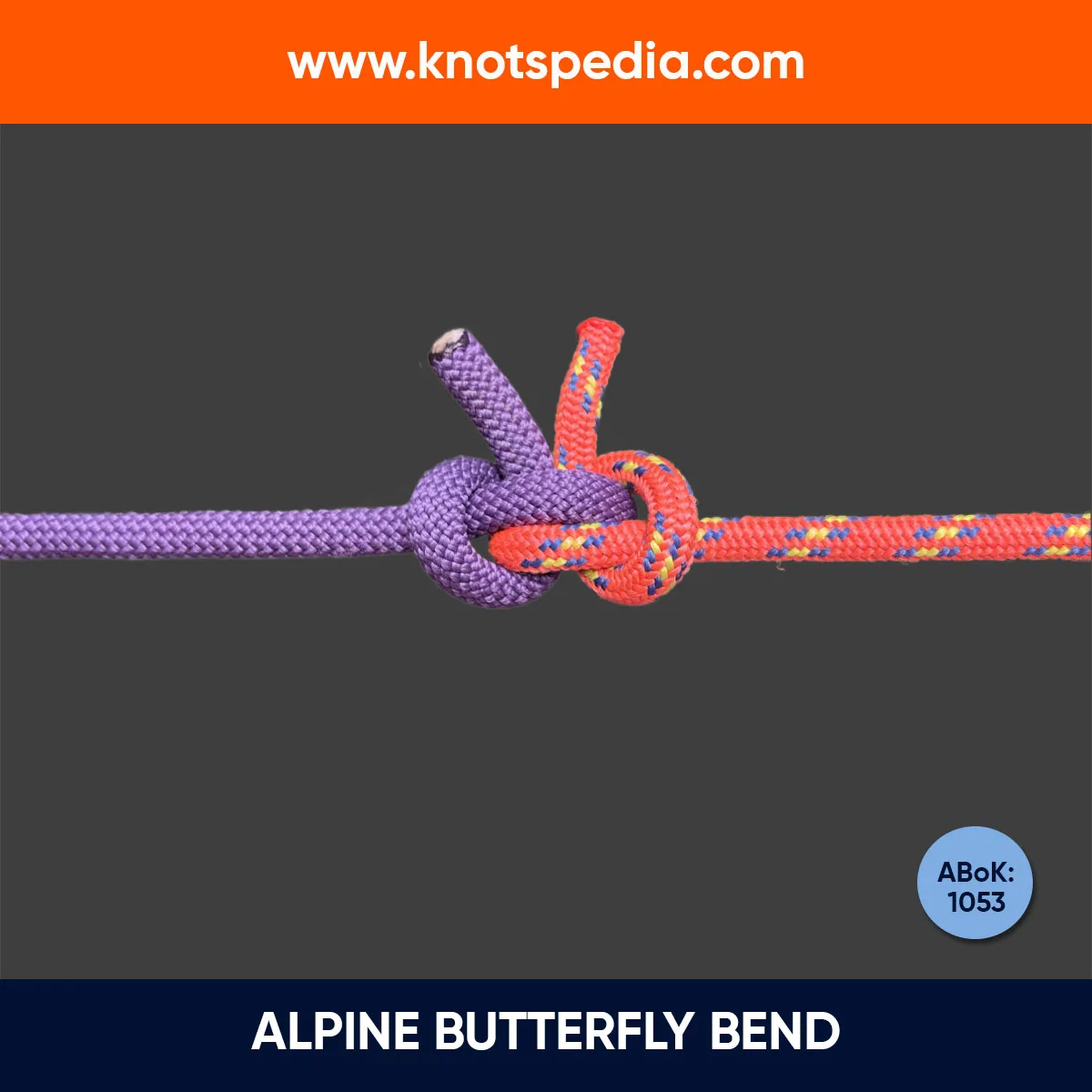
Alpine Butterfly bend is derived from the Lineman’s Loop (ABoK #1053) and it looks similar to the Alpine Butterfly loop with just the loop cut.
It is a reliable bend that’s easy to tie and untie, especially after being loaded.
Interesting History of the Zeppelin Bend
There is some history, or rather, a myth about Zeppelin Bend.
It’s believed to have been deployed to secure the great lighter-than-air ships called “Zeppelins.”
The name came in honor of Count Ferdinand von Zeppelin, who was a pioneer of the Airships.
The Airships required a knot that’s safe, takes massive strain, and is easy to untie when needed.
The Zeppelin Bend fulfilled all of these requirements.
It’s often credited to a US naval officer named Rosendahl, who first used this knot to moor his ship.
But Rosendahl denied all knowledge of the knot later.
This detail was brought to light by Giles Camplin, editor of the Airship Heritage Trust’s Journal Dirigible.
Share this article with your friends and family!
